Botanical Survey of India
Botanical Survey of India (BSI), founded 13 February 1890, is Government of India Ministry of Environment, Forest and Climate Change's organization for survey, research and conservation of plant resources, flora and endangered species of India, including by collecting and maintaining germplasm and gene bank of endangered, patent and vulnerable plant species.
भारतीय वनस्पति सर्वेक्षण | |
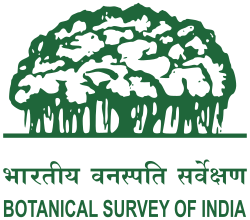 | |
BSI Industrial Section at Kolkata | |
| Abbreviation | BSI |
|---|---|
| Formation | 13 February 1890 |
| Purpose | To survey, research and conservation of plant resources, flora and endangered species |
| Headquarters | CGO Complex F Wing, 5th and 6th Floor, DF Block, Sector I, Salt Lake City, Kolkata |
| Location |
|
Region served | India |
Parent organisation | Ministry of Environment, Forest and Climate Change, Government of India |
| Website | www |
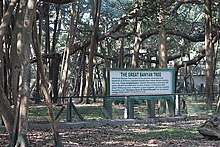
BSI (botany) as well as ASI (archaeology), FiSI (fisheries), FSI (forests), GSI (geology), IIEE (ecology), NIO (oceanography), RGCCI (population survey) and language survey), SI (cartography) and ZSI (zoology) are key national survey organizations of India.
History
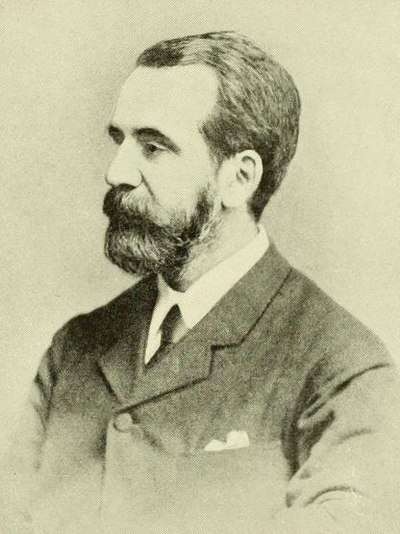
BSI was formally instituted by East India Company (EIC) on 13 February 1890[1] under the direction of Sir George King who became first ex-officio Director, earlier he had been superintendent of Royal Botanic Garden, Calcutta since 1871. The Calcutta Garden became the headquarters of the Survey and was given regional responsibility for Bengal, Assam, North East, Burma, and the Andaman and Nicobar Islands.[2]
Prior to 1890, EIC had already established botanical gardens at Sibpur, pune, Saharanpur and Madras as centres for improving botanical knowledge and experimentation under the local Governments, for example Saharanpoor botanical garden, dating earlier than 1750, was acquired by EIC in 1817 for growing medicinal plants.[3] Most of the EIC botanical gardens' work was for the cultivation of plants for exploiting resources of India for commerce and trade.[2] The Botanical Survey of India has been engaged in exploring, identifying and documenting rich plant resources of the country. Sir George King, who was the then Superintendent of the Royal Botanical Garden, Calcutta (now rechristened as Acharya Jagadish Chandra Bose Indian Botanical Garden), became the first Director of the Botanical Survey and was holding the dual charges of Garden and the Survey. A consolidated flora of the Indian subcontinent had been published under the leadership of Sir J.D.Hooker between 1872 and 1897. The Survey flourished for about half a century and generated both material base and literature for taxonomic research. Subsequent to the retirement of C.C. Calder in 1939, the Survey turned quiescent till 1953. After independence, Dr. E.K. Janaki Ammal was appointed as Officer on Special duty by Government of India in 1952, for revival of Botanical Survey for building the much desired inventory of the country’s rich plant resources. The reorganization plan, submitted by her was approved in 1954 and since then Survey was strengthened with focus to undertake intensive exploration surveys, to document the plant resources the country, to act as a custodian of authentic collections in herbaria, for the advancement of taxonomic research in the country and as a stakeholder in different strategy of plant conservation and sustainable utilisation.
Organisation
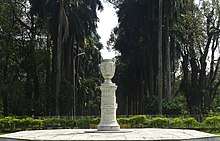
Headquarters: Apart from the Directorate, the Headquarter consists of Flora Cell, Cryptogamic Section, Palynology Section, Central Library, Publication Section, Technical Section, Pharmacognosy Section, Ecology and Plant Chemistry Section. The Central library is with about 54,500 accessioned books and subscribes more than 62 National and International journals. The Pharmacognosy Section possess about 700 crude drug samples, while Cryptogamic section has more than 70,000 specimens of Pteridophytes, 5,000 of mosses, 2,000 of liverworts, 4,500 fungi, 3,000 lichens and 1,500 algal specimens.
AJC Bose Indian Botanic Garden, Howrah: AJC Bose Indian Botanic Garden, established in 1790 by Robert Kyd on the bank of River Hooghly, and formerly known as Indian Botanic Garden, is one of the best landscaped gardens in the world. At present, the garden has an area of 273 acres and is a living repository of more than 14,000 plants belonging to 1,405 species. The garden has 25 different sections with 24 interconnected artificial lakes and recognized as a unique place of learning and has attractions such as the ‘Great Banyan Tree: a living wonder in the plant kingdom; the Large Palm House containing rich collection of palms, including the Double Coconut Palm (Lodoicea maldivica); Branching Palm (Hyphaene thebaica) introduced from Egypt; the Century Palm (Corypha macropoda); the Giant Water Lily (Victoria amazonica) brought from Amazon River; the Queen of flowering trees (Amherstia nobilis), a native of Myanmar; the Mountain Rose or Venezuelan Rose (Brownea macrophylla; the Baobab Tree or Kalpavriksh (Adansonia digitata), a native of Africa; the Rosogolla Tree (Chrysophyllum cainio); The Cannon ball tree (Couroupita guianensis); the African Sausage Tree (Kigelia pinnata); the Mad Tree (Pterygota alata) and the ‘Candle Stick Tree’ (Parmenriera cereifera), are a few to mention. Its germplasm collections cover Bamboos, Bougainvillea, Citrus, Jasmine, Pandanus, Water Lilies, Palms, and besides a Medicinal Plant Garden.
The Central National Herbarium: The Central National Herbarium (CAL) is one of the oldest and largest herbaria in the world. Presently, the Central National Herbarium possesses about 2.6 million herbarium specimens belonging to nearly 350 families of angiosperms. Apart from these collections, good collection of drawings of Indian plants painted by natural dyes and many archival collections are in possession of CAL. This centre has also appreciable cryptogamic collections that include fungi, lichens, algae, bryophytes and pteridophytes. It is the hub of taxonomic work of our country serving as a centre for the correct identity including distribution mapping of plants, national reference for literature and specimens to plant taxonomists. It also renders services of varied nature for diverse institutions for the last two centuries. The states of Bihar, Jharkhand and West Bengal come under its jurisdiction, covering an area of 2,62,627 sq. km.
Central Botanical Laboratory: The Central Botanical Laboratory, established on 13 April 1954, is a Centre of research in the field of Ethnobotany and Economic Botany. The laboratory maintains Economic Botany Section with about 6,500 ethnobotanical specimens and its museum with 4233 exhibits.
The Industrial Section, Indian Museum, Kolkata : Established on 1 April 1887, showcase the first-hand information on both wild and cultivated economic plants and plant products of India in eight Bays in the Botanical Gallery of Indian Museum. The Botanical Gallery with about 20,000 exhibits is a repository of diverse collection of economic and useful plant materials,
Regional Centres The Eastern Regional Centre, Shillong : Concerned with exploration and inventory of the flora of Northeast India, comprising the states of Assam, Manipur, Meghalaya Mizoram Nagaland and Tripura. This Centre’s herbarium (ASSAM) has a holding of about 2,60,000 specimens of flowering plants and about 11,000 specimens of non-flowering plants, including about 600 type specimens. The Centre also has a Library, Museum, National Orchidarium and a Tissue Culture Laboratory, besides an Experimental Botanic Garden at Barapani, where a total of 756 species of angiosperms, 13 gymnosperms, 49 pteridophytes and 53 bryophytes of Northeast India are conserved. Western Regional Centre, Pune: The jurisdiction of this regional Centre includes states of Maharashtra, Goa, Karnataka and the Union Territories of Dadra, Nagar Haveli, and Daman Diu. The herbarium (BSI) of the Centre has about 1,33,000 specimens, including 687 type specimens; mainly showcase the biodiversity of Western Ghats, including the adjacent regions of Rajasthan, Andhra Pradesh and Kerala. The associated garden at Mundhwa has about 400 species.
Southern Regional Centre, Coimbatore : The Centre covers Kerala, Tamil Nadu and the Union Territories of Lakshadweep and Puducherry. The Centre’s herbarium (MH) has more than 2,66,000 specimens, including 2,750 type specimens. The associated garden at Yercaud maintains about 1,100 species that include collections at National Orchidarium.
Northern Regional Centre, Dehradun : The Centre covers Chandigarh, Haryana, Himachal Pradesh, Jammu and Kashmir, Punjab and Uttarakhand, including Trans-Himalayan Cold Deserts of Western Himalaya. The herbarium (BSD) of this Centre holding about 1,27,000 specimens of flowering plants, including 140 type specimens and 11,300 specimens of nonflowering plants showcasing the vast floristic diversity of the Northwest Himalaya, Indian Cold Desert, Shiwalik and part of Upper Gangetic Plains. The associated gardens at Pauri and Khirsoo maintain the national gymnosperm collections for Gymnosperms.
Central Regional Centre, Allahabad : The Centre covers Chhattisgarh, Madhya Pradesh and Uttar Pradesh. The herbarium (BSA) of this regional Centre has about 79,000 herbarium specimens, including 4 type specimens. In addition, it houses about 1,700 pteridophytes and 5,000 lichens. The associated garden maintains about 450 species. Arid Zone Regional Centre, Jodhpur : This Centre was established on18th February 1972 to explore and to carry out floristic studies on plant resources of the arid and semi-arid regions of the North-western India, viz. Rajasthan and Gujarat.The herbarium (BSJO) attached to the Centre has more than 33,500 specimens, including 18 type specimens displaying plant diversity of Rajasthan and Gujarat states. The associated Desert Botanic Garden located in the premise of the regional Centre has more than 250 species of arid region.
Andaman and Nicobar Regional Centre Port Blair: Established at Port Blair on 30 March 1972 with an objective to document the plant diversity of the Andaman and Nicobar Islands. The herbarium (PBL) of the regional Centre has about 32,000 herbarium specimens, including 109 type specimens. Some of the remote areas that were surveyed by the Centre are Saddle Peak National Park, Mount Thullier, Campbell Bay National Park and little Nicobar Tribal Reserve. The associated Experimental Garden-cum-Arboretum at Dhannikhari maintains more than 200 plant species.
Arunachal Pradesh Regional Centre, ltanagar : The Centre is exclusively devoted to the plant-rich Arunachal Pradesh and its herbarium (ARUN) has more than 30,000 specimens of vascular plants, including 22 type specimens, about 1,100 specimens of bryophytes and more than 3,500 specimens of pteriodphytes. The botanic garden at Sankie View, has about 400 species.
Sikkim Himalayan Regional Centre, Gangtok : The Centre is exclusively devoted to the state of Sikkim, and its herbarium (BSHC) has about 45,200 specimens, which include 22 type specimens, besides, there are about 3,700 pteridophytes,1,757 1ichens and 215 macrofungi. The associated garden in the campus has about 310 species, mostly orchids from Sikkim.
Botanic Garden of Indian Republic, Noida : Established in 2002 with a mandate to bringing about 35 per cent of the country’s wild plant diversity under ex situ conservation. The garden is actively engaged in replicating the different forest types of India and also in developing different economic plant sections. Deccan Regional Centre, Hyderabad : Established in 2005 at Hyderabad, the Centre covers Andhra Pradesh and Odisha. The herbarium (BSID) of this Centre has about 16,400 herbarium specimens pertaining Andhra Pradesh and Odisha states, including about 900 mangrove specimens and about 6,500 Greater Hyderabad specimens. Presently, housed in ZSI premises, the Centre is engaged in exploring the flora of Greater Hyderabad.
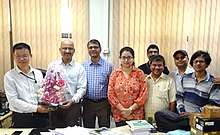
[4] The present Director of Botanical Survey of India is Dr. Ashiho Asosii Mao, He is expert of plant tissue culture and allied techniques, in micro propagation of RET, Orchids, Rhododendron, Medicinal plants, ethnography & floristic study especially of North East India. He is also first Director of Botanical Survey of India (BSI) from the North East India and the first ever among the ST/SC/OBC category to hold the prestigious position in the history of BSI since its establishment in 1890,he describes himself as “a village boy.” [5]
Academic and research program
Botanical Survey of India also offers Fellowship for doing research in Plant Taxonomy and also offers post doctorate fellowships to those who are trained in Taxonomy and want to continue their research related to the mandate of BSI.[2]
Important Publications of BSI
Apart from the Publishing Flora of India series books, states floras, flora of Protected regions and Red Data Book of Indian Plants, BSI have also known for its various annual publications some of them are :
[6]Plant Discoveries/ वनस्पति अन्वेषण: Plant Discoveries is an annual bilingual publication of Botanical Survey of India, having most authentic information on India's plant wealth. As per recent release of Plant Discoveries 2018 by Botanical Survey of India on World Environment Day, there is total of 18666 species of angiosperms, 82 species of gymnosperms, 1302 species of pteridophytes, 15396 species of fungi, 7411 species of algae, 2780 species of bryophytes, 2581 species of lichens and 1223 species of microbes in India, which is approximately 11.5 percent of total recorded plant species in world. Since its reorganization, in 1954, BSI officials described 01 new families, 43 new genus and 1666 new species and infra-specific taxon. During 2018, total 438 plants has been discovered by scientist of BSI and other institutes.
[7]Nelumbo This is a biannual journal published by the Botanical Survey of India. The journal is peer-reviewed and authentic journal of plant taxonomy and plant sciences.As per recent NAAS rating 2019 the journal rated 4.17.[8] [9]Plant voice/वनस्पति वाणी This is annual Hindi magazine published by Botanical Survey of India, on the occasion of Hindi Diwas.
Botanical gardens
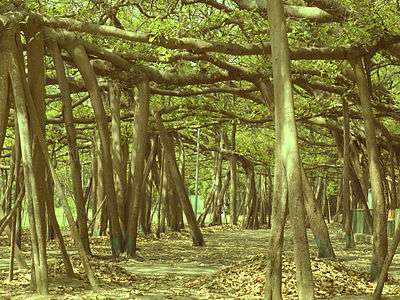
- Agri Horticultural Society of India, Alipore, Kolkata
- Acharya Jagadish Chandra Bose Botanical Garden, Shibpur, Kolkata
- Lalbagh, Bangalore, Karnataka
- Government Botanical Gardens, Udagamandalam, Ootacamund, Tamil Nadu
- National Orchidarium and Botanical Garden, Yercaud, Tamil Nadu
- Lloyd's Botanical Garden, Darjeeling, West Bengal
See also
- List of botanical gardens worldwide
- National Botanical Research Institute
- Tropical Botanic Garden and Research Institute
External links
References
- Botanical Survey of India (BSI) "History", Botanical Survey of India. Archived 24 February 2007 at the Wayback Machine
- BSI
- The Saharánpur Botanic Garden", Natural History Museum, London
- Botanical Survey of India 125 Year plant exploration, Kolkata 2016
- https://morungexpress.com/journey-of-a-village-boy-to-director-of-bsi/
- https://www.researchgate.net/publication/325644547_Plant_Discoveries_2017
- http://www.nelumbo-bsi.org/index.php/nlmbo/pages/view/aj
- https://www.researchgate.net/publication/330107446_List_of_new_journals_with_NAAS_Scores_2019_-National_Academy_of_Agricultural_Sciences-_ICAR-_New_Delhi
- http://bsi.gov.in/Publication/239_1_PublicationLists.aspx